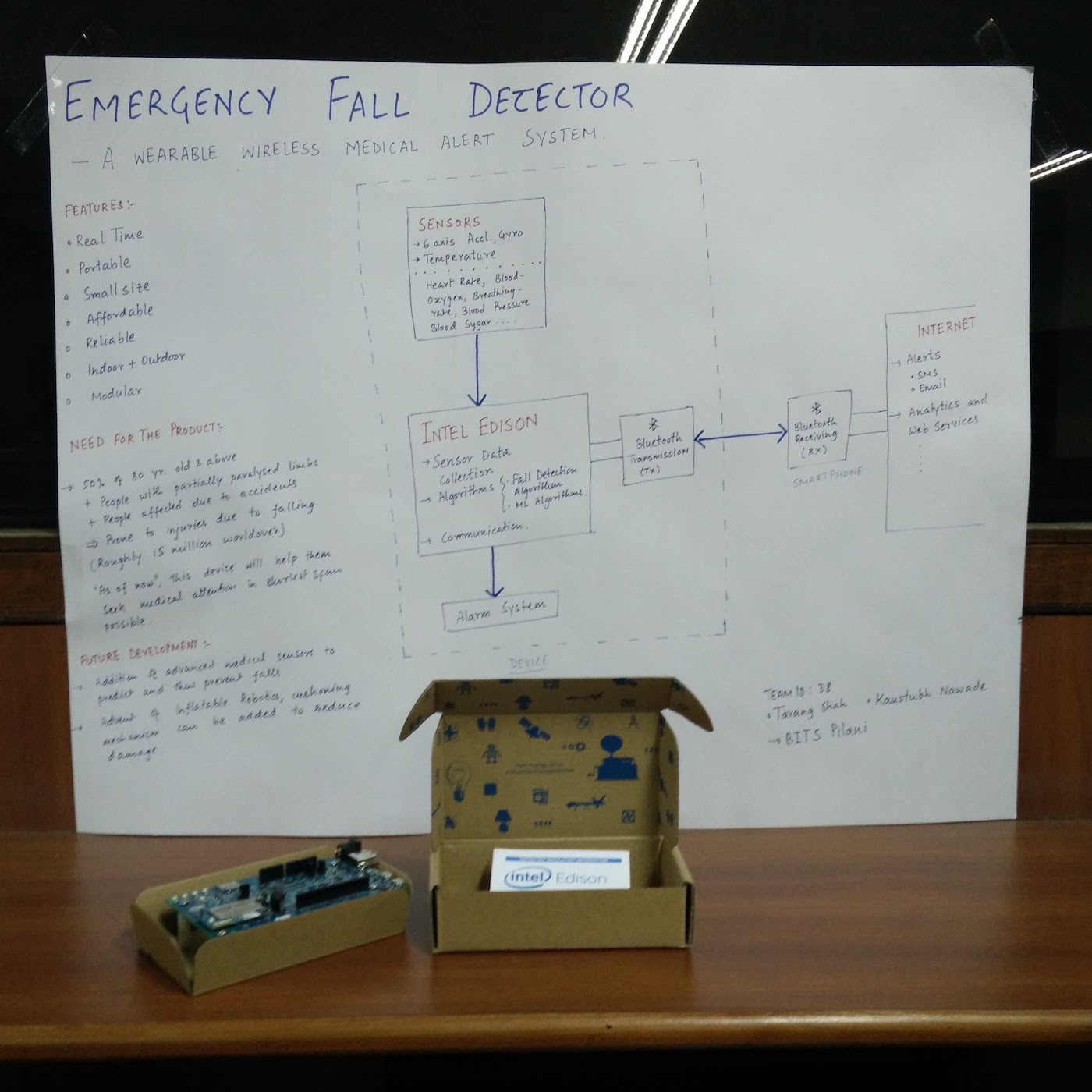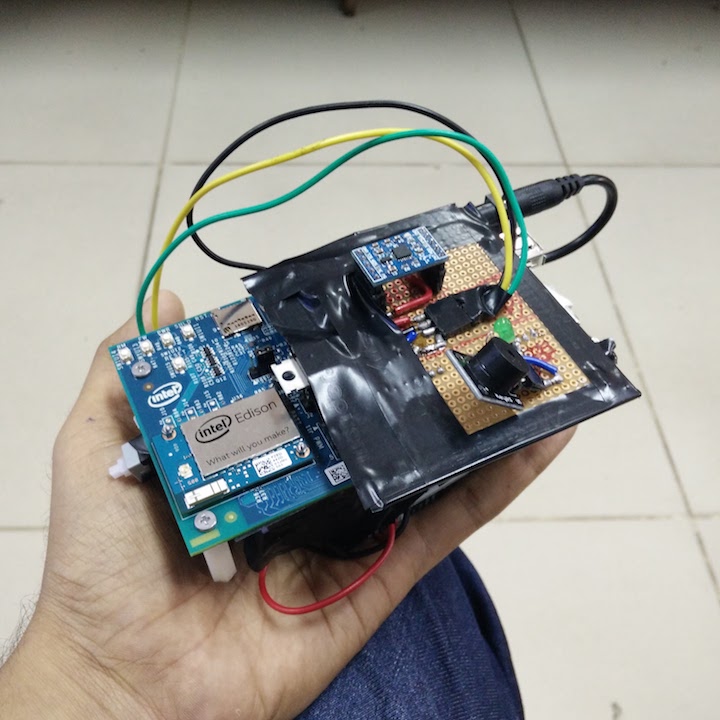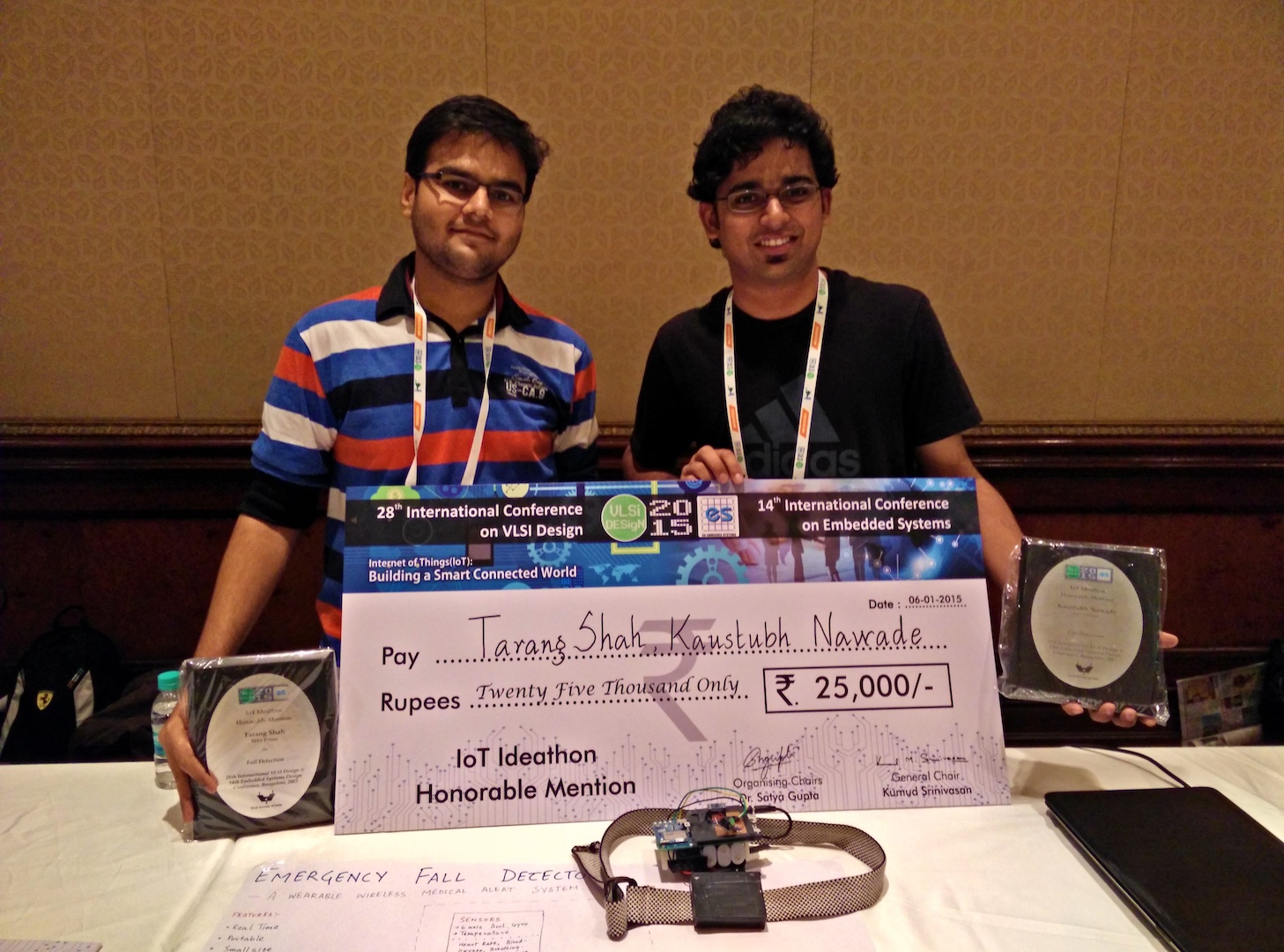About us,
I, Tarang Shah, and my teammate Kaustubh Nawade are engineering undergrads from BITS Pilani, Pilani Campus. We took part in the IoT Ideathon as part of the VLSI Design Conference 2015 held at Bangalore in January 2015. We are robotics, hardware and software enthusiasts who enjoy tinkering and building stuff.
About the Event
The IoT Ideathon was a 60 hour hackathon aimed at giving life to an idea. Out of around 60 entries, 25 ideas were shortlisted and these teams were invited over to Bangalore for the Ideathon. Each team had to submit a one-page document detailing their idea and the components that would be required.
To the teams which showed up, almost all the required components were generously provided by the organisers(Thank You!!). The aim was to get the components working and implementing the Idea in the short time.
Our Experience
The overview
Unlike software hackathons where people are generally coding all day and night, this was completely different. Not only do you have to write software, you have to ensure that the hardware is also correctly connected and configured. Plus you have to debug both the software and hardware when things dont work as they should. But, of course, sleep is something you can barely afford during all this.
Also for most of us, the platforms were completely new and we also had to learn of the intricacies of the platforms as we wrote software for it. The organisers and mentors were a great source of help here. For example, there were mentors from Intel who were happy to help for the Intel based platforms - Edison and Galileo that many teams were using.
All in all, you need to ensure the software and all hardware components(sensors, communication modules)are working properly while you integrate them. And if they aren’t working properly or stop working unexpectedly, hack around to make them work or think of some last minute workaround to do without them!
Our work
When submitting the idea, there were a few things running in our mind. The fact that we had only 60 hours was the most crucial one. We had to account for hardware integration, coding, debugging and some buffer time for unforeseen errors. We realised that we had to do one thing and do it well.
We decided to build a Wireless Fall Alert System. A wearable device which detects a physical fall and alerts nearby people and close ones about the accident. Nearby people are alerted through a sound alarm and close ones(relatives, caretakers and doctors) are notified through an SMS or Email.
 The “poster” for our project - 100% handmade in less than 10 mins
The “poster” for our project - 100% handmade in less than 10 mins
A more technical description follows here, This will be a wearable device which senses your motion through an accelerometer and gyroscope sensor. A continuous fall detection algorithm will be applied on this sensor data stream on the microcontroller itself. Initially the device is paired to a nearby phone/tablet using Bluetooth. Then if the algorithm reports a fall, the microcontroller sends a signal to the paired phone via bluetooth. The phone will then further alert the relatives/doctors(pre-configured contacts) through SMS and emails.
Conclusion
We built this concept using the Intel Edison and an Invensense accelerometer + gyro chip(MPU6050). Over three days, both of us divided our work and decided our targets daily. We planned to complete the hardware and software integration as soon as we could and to use the remaining time to integrate the the whole system structurally. Which included assembling the components as a small integrated device with batteries and make it portable.
Most hardware products start out as many different things wired together somehow and powered through a plug. This stage is at times good for debugging(both software and hardware) but once thats done, its important to integrate the components. Since ours was a motion based concept, it made all the more sense for us to have a integrated device to demonstrate our idea perfectly. We tried our best to make a truly wireless device which would operate independently.
Here’s a picture of the final prototype we built.
 A handful of our tiny device(AA batteries included😉)
A handful of our tiny device(AA batteries included😉)
Yes thats the whole device which fits in my palm. The batteries are hidden below the board and you can see the sensor and buzzer on the top.
In the end, our device was one of the few devices which was working properly! We even sent the judges our emergency SMS’s by literally “falling for them”; no literary figure of speech intended, we actually simulated falls for the device to trigger the alerts. We received good feedback from the judges and eventually stood in the Top 3!
 3rd Position!💥
3rd Position!💥
The trip down to Bangalore was worth it. We also got a chance to interact with the rest of the participants, the organisers, the judges and the sponsors which made it even more worthwile to be there!
Do let me know if you have anything to say, ask or suggest, through the comments below.